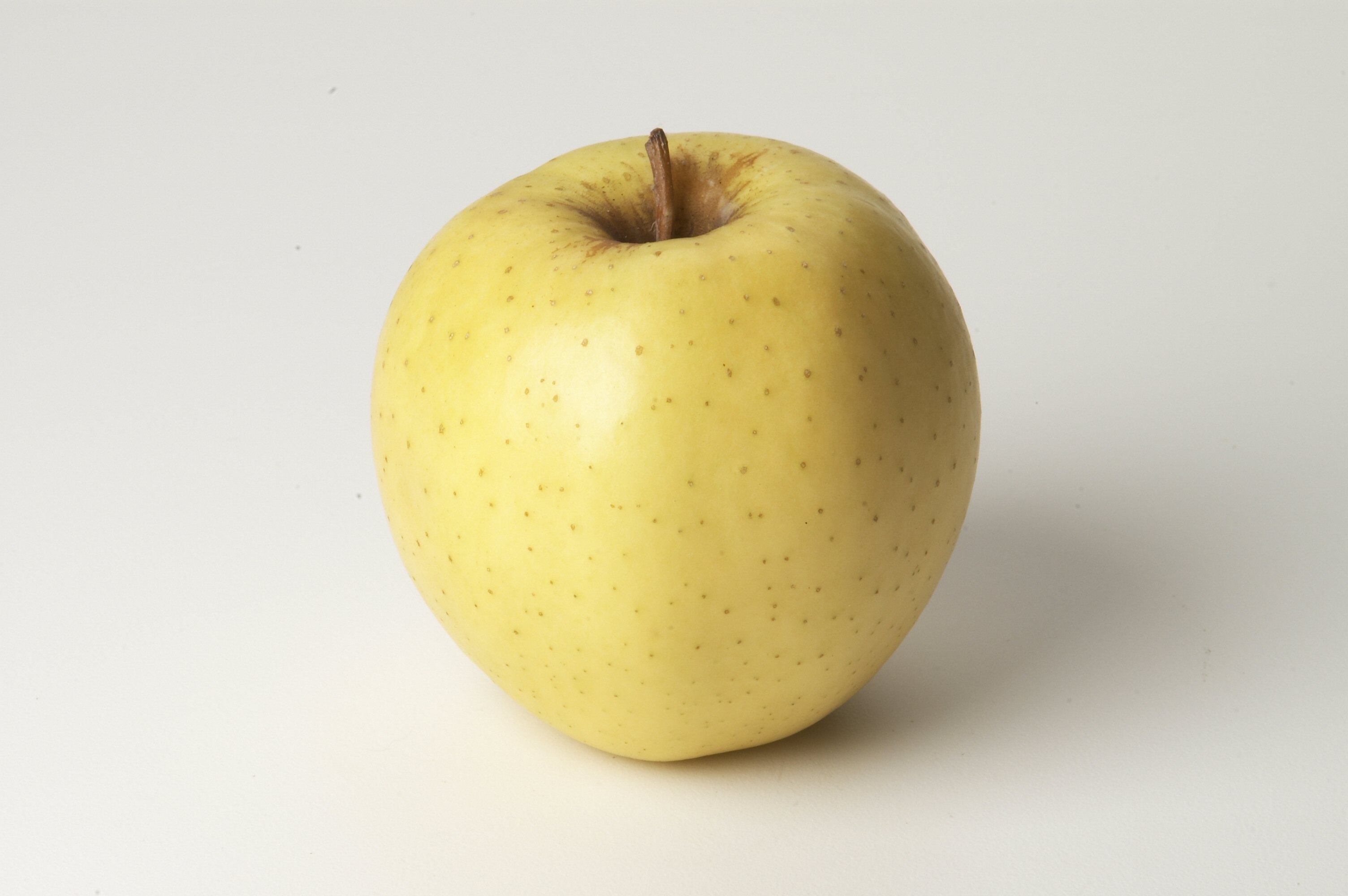Cinnamon


Cinnamon

Italian Seasoning

Cayenne

Cream (Heavy & Half and Half)

Usage:
Excellent for eating fresh, pies & salads; Very good for baking & apple sauce.
Selection:
Good-quality Golden Delicious apples will be firm with smooth, clean skin and range in color from light green to pale or creamy yellow. Less mature product will be light green and have a somewhat tart flavor. More mature goldens will have a clear yellow color and will be sweeter. Some goldens may have a wash of pink color or blush across the “shoulders,” the result of warm sunny days and cool nights. Test the firmness of the apple by holding it in the palm of your hand. (Do not push with your thumb). It should feel solid and heavy, not soft and light.
Avoid:
Avoid product with soft or dark spots. Also if the apple skin wrinkles when you rub your thumb across it, the apple has probably been in cold storage too long or has not been kept cool. Also avoid goldens with “russeting,” a bronze-colored, rough and scab-like condition principally on the stem end of the apple.
Seasonal Information:
Golden Delicious Apple Nutritional Information:
Serving Size: 1 medium apple (154g)
Amount Per Serving:
Calories 80 Calories from Fat 0
% Daily Value*
Total Fat 0 0%
Cholesterol 0mg 0%
Sodium 0mg 0%
Total Carbohydrate 22g 7%
Dietary Fiber 5g
Sugars 17g
Protein 0g
Vitamin A 2%
Vitamin C 20%
Calcium 2%
Iron 2%
*Percent Daily Values are based on a 2,000 calorie diet. Your daily values may be higher or lower depending on your calorie needs.
Source:
PMA’s Labeling Facts
Apples are very low in Saturated Fat, Cholesterol and Sodium. They’re also a good source of Dietary Fiber and Vitamin C.
Apple Tips & Trivia:
Product content provided by Produce Oasis